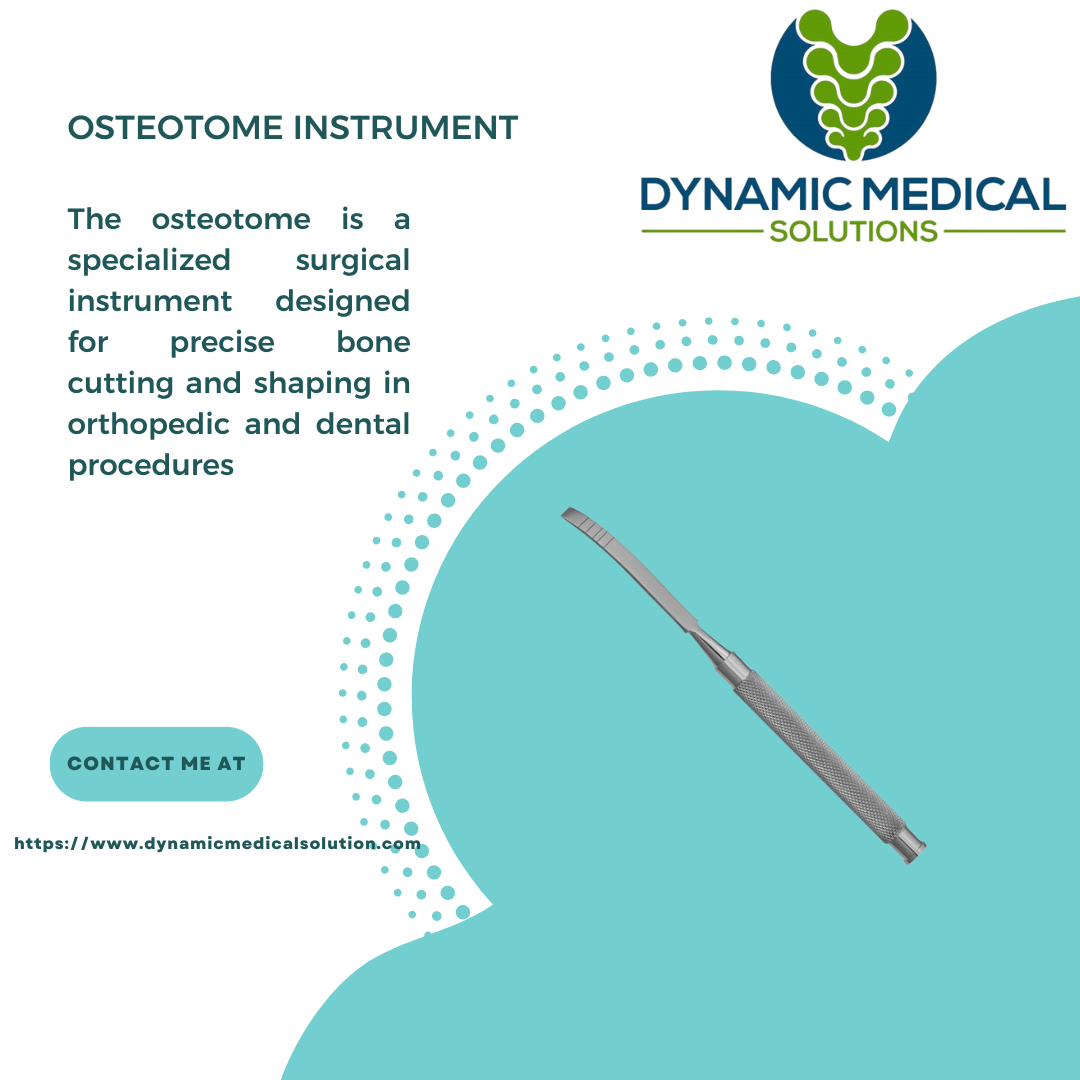Osteotomes, surgical instruments resembling chisels, are essential tools in orthopedic, plastic, and dental surgery. They are primarily used to cut or shape bone tissue. The design and type of osteotome employed can significantly impact the precision and efficiency of a surgical procedure. In this article, we delve into the various types of osteotome instruments, exploring their unique characteristics and applications.
Classification of Osteotome Instruments
Osteotomes can be classified based on several factors, including blade shape, size, and specific surgical purpose. Here are the primary types:
- Straight Osteotome
- Characteristics: Features a straight blade, suitable for straightforward cutting tasks.
- Applications: Commonly used in orthopedic surgery for procedures like joint replacements, fracture repairs, and bone lengthening.
- Curved Osteotome
- Characteristics: Possesses a curved blade, enabling access to hard-to-reach areas.
- Applications: Frequently used in plastic surgery for facial contouring and craniofacial procedures, as well as in orthopedic surgery for complex fracture repairs.
- Chisel Osteotome
- Characteristics: Resembles a traditional woodworking chisel, with a wide, flat blade for heavy-duty cutting.
- Applications: Often employed in orthopedic surgery for bone grafts and bone shaping, as well as in dental surgery for dental implant placement.
- Gouge Osteotome
- Characteristics: Features a concave blade, ideal for removing bone tissue in a controlled manner.
- Applications: Commonly used in plastic surgery for bone sculpting and in orthopedic surgery for creating bone cavities.
- Osteotome Sets
- Characteristics: A collection of various osteotome types, sizes, and curvatures, packaged together.
- Applications: Provide versatility and convenience for a wide range of surgical procedures.
Factors Influencing Osteotome Selection
Several factors influence the selection of an appropriate osteotome for a specific surgical procedure:
- Bone Hardness: The hardness of the bone to be cut will determine the required blade strength and sharpness.
- Surgical Site Accessibility: The location of the surgical site will influence the choice of straight or curved osteotomes.
- Desired Bone Shape: The desired shape of the bone after the procedure will dictate the appropriate blade type and size.
- Surgeon’s Preference: Surgeons often have personal preferences for specific osteotome brands and styles.
Advancements in Osteotome Technology
Recent advancements in surgical technology have led to innovations in osteotome design and materials:
- High-Quality Stainless Steel: Modern osteotomes are crafted from high-quality stainless steel, ensuring durability, corrosion resistance, and optimal cutting performance.
- Ergonomic Handles: Ergonomic handles provide improved grip and reduce hand fatigue during prolonged surgical procedures.
- Precision Machining: Advanced machining techniques enable the production of osteotomes with precise blade angles and sharp edges.
- Specialized Coatings: Some osteotomes are coated with materials that enhance cutting efficiency and reduce friction.
Conclusion
Osteotome instruments are indispensable tools in the arsenal of orthopedic, plastic, and dental surgeons. By understanding the various types of osteotomes and the factors influencing their selection, surgeons can optimize surgical outcomes and improve patient care. As technology continues to evolve, we can expect further advancements in osteotome design and materials, leading to even greater precision and efficiency in surgical procedures.


